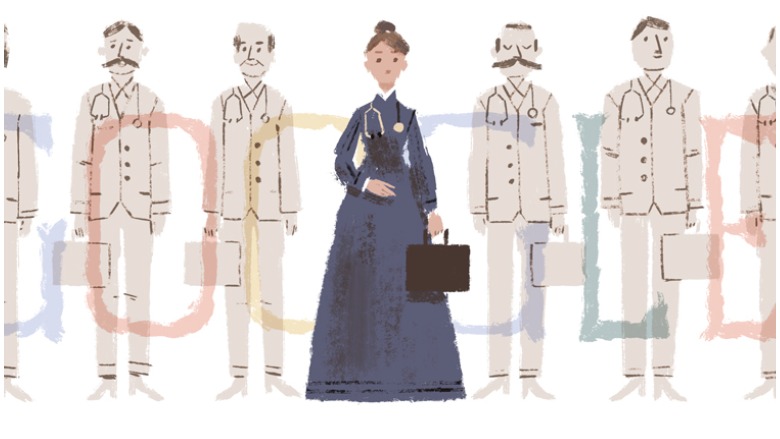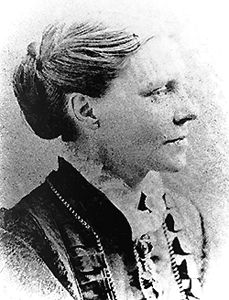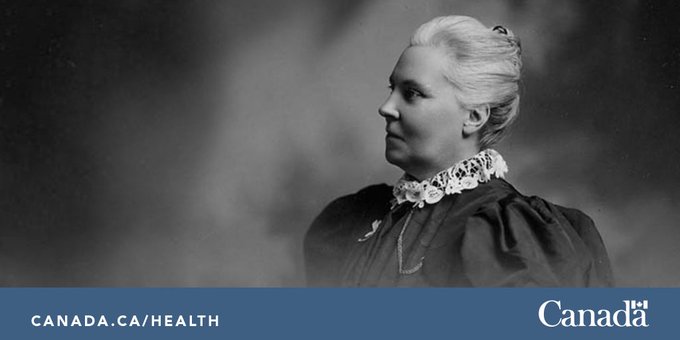
Google Jennie Trout Google Doodle.
Jennie Trout, a pioneer in Canadian medicine, is the subject of an April 21, 2018 Google Doodle on what would have been her 177th Birthday. She is also known as Jennie Kidd Trout.
Jennie Trout accomplished historic achievement in Canadian medicine. Jenny Kidd Trout (Sometimes known as Jennie Kidd Gowanlock or Jennett Gowanlock) was “one of the women who first challenged men’s exclusive hold on the medical profession in Canada,” according to Biographi.ca.
Here’s what you need to know:
1. Trout Was the First Woman Licensed to Practice Medicine in Canada

Jennie Trout
Jennie Trout holds the honor of having achieved a “first” in Canadian history. According to the Canadian Encyclopedia, she was the first Canadian woman who earned a license to practice medicine in Canada.
“As no Canadian medical school admitted women, she enrolled at the Woman’s Medical College of Pennsylvania, graduating in 1875,” reported the Encyclopedia’s website, noting that, after she passed the Ontario registration exam, she was well on her way to a medical career.
It wasn’t easy being a woman in medicine during those days. She and another woman in the medical school program were “harassed and constantly treated crudely,” but Trout didn’t give up, according to HealingandRevival.com.
2. Jennie Trout Married a Toronto Publisher & Illness Drove Her Interest in Medicine
Jennie Trout was raised in Ontario, near Stratford, and she married Toronto publisher Edward Trout in 1865. It was then that she decided to become a doctor, the Canadian Encyclopedia reports.
According to Biographi.ca, Edward Trout “sold advertising for the Toronto Leader in the region. After an extended courtship they married and settled in Toronto. Edward prospered and in 1867 he and his brother John Malcolm founded a highly respected financial weekly, the Monetary Times.”
At that time, Jennie Trout became ill. She was soon suffering from “nervous disorders that suddenly set in after her marriage left her a semi-invalid barely able to move. She sought treatment through the new science of electrotherapy, and good results caused her to revive her childhood dream of pursuing medicine as a career,” the site reports.
3. Trout Worked to Champion Other Women in Medicine
Trout wasn’t content to rest on her own achievements. She reached back to help other women achieve what she had done. “A fervent promoter of women in medicine, she helped endow the Women’s Medical College, Kingston, Ont, in 1883,” reports the Encyclopedia.
Canada honored Trout with a postage stamp that recognizes her history-making achievements. She died in 1921 at the age of 80.
4. Trout Was Born in Scotland to Parents Who Were Farmers
Although she was raised in Ontario, Jennie Trout was born in on April 21, 1841 in Kelso, Scotland, according to Biographi.ca. Her parents, Andrew Gowanlock and Elizabeth Kidd, were farmers, the site reports.
The family grew potatoes, turnips, hay, and butter on their farm in Canada. According to a scholarly article on Trout by Darrell Buchanan, “The Gowanlocks were descendants of a persecuted Swiss preacher who fled to Scotland in the middle of the 18th century.”
5. Jennie Trout was Motivated by Her Christian Faith
Trout was driven by her Christian faith to believe that women should practice medicine. “I hope to live to see the day when each larger town (at least) in Ont. will have one good true lady physician working in His name,” she once wrote.
She met her husband in church. Growing up, she and her family “were members of the Knox Presbyterian Church. When Jenny was 19 she moved to Toronto, where she came into contact with the Shuter Street Church of Christ,” and met Edward Trout there, according to HealingandRevival.com.

